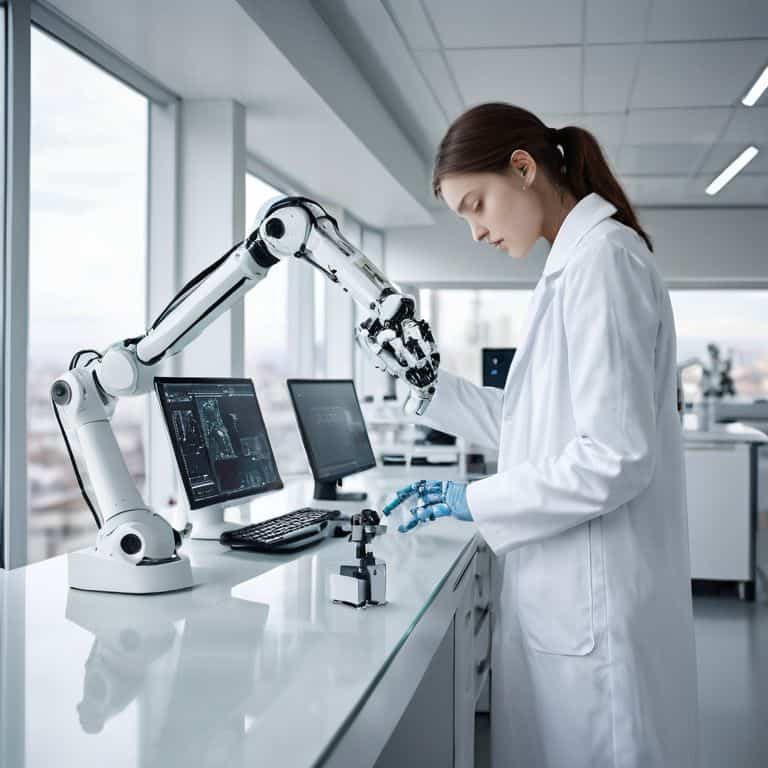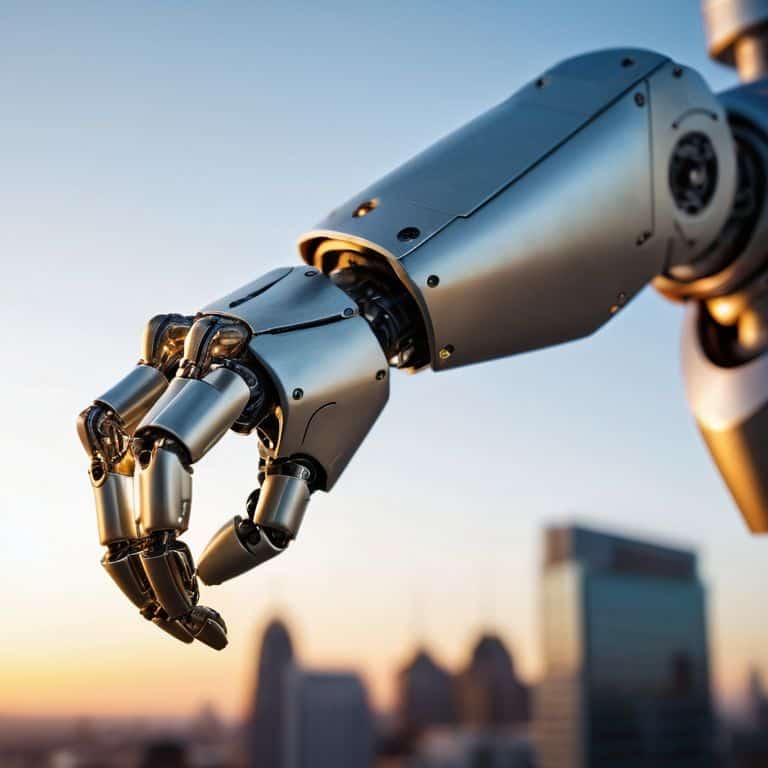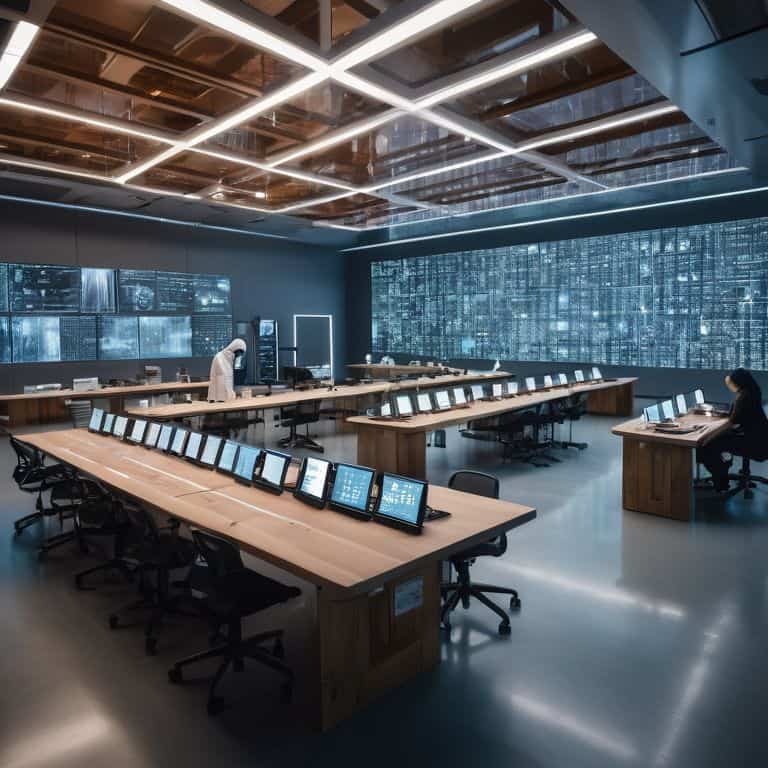I still remember the day I realized that the future of artificial intelligence wasn’t all about sleek robots and futuristic utopias. As a designer of smart home devices, I saw firsthand how AI was being engineered to capture our attention, to keep us hooked on our screens and dependent on the latest gadgets. It was a wake-up call, and I began to question the true cost of our obsession with AI. The constant barrage of “revolutionary” tech solutions and “game-changing” innovations started to feel like a thinly veiled attempt to control our lives, rather than genuinely improve them.
As someone who’s been in the trenches, I want to offer you a different perspective on the future of artificial intelligence. I’ll cut through the hype and give you a no-nonsense look at what’s really going on. I’ll share my own experiences, the lessons I’ve learned, and the insights I’ve gained from exploring the unintended uses of technology. My goal is to help you cultivate a healthier relationship with your devices, one that’s intentional and beneficial, not addictive and controlling. I’ll show you how to think critically about the tech in your life, and how to harness the power of AI without losing yourself in the process.
Table of Contents
Rethinking Ai Safety

As I delve into the world of AI, I’m reminded of my hobby – building intricate, hand-cranked automatons. It’s a human touch that I believe is essential in the development of artificial intelligence. Rethinking AI safety protocols is crucial, and it’s an area where I think we can learn from the unintended uses of technology. By studying how people repurpose and modify gadgets, we can gain valuable insights into creating more robust and secure AI systems.
The ethics of autonomous systems is a topic that fascinates me. As we move forward with the development of artificial general intelligence, it’s essential to consider the potential consequences of our actions. I believe that human-AI collaboration benefits can be substantial, but only if we prioritize transparency and accountability in the design process. By doing so, we can create AI systems that augment human capabilities without compromising our values.
In my opinion, the key to ensuring AI safety lies in ai driven societal transformations. We need to think about how AI can be used to drive positive change, rather than simply accepting it as a inevitable force. By reexamining our relationship with technology, we can create a future where AI enhances our lives without controlling them.
Ai Safety Protocols a New Era
As we delve into the realm of AI safety, it’s becoming increasingly clear that traditional protocols are no longer sufficient. We need to think outside the box and consider the unintended consequences of creating autonomous systems that can learn and adapt at an exponential rate. This requires a fundamental shift in how we approach AI development, one that prioritizes transparency, accountability, and human values.
The future of AI safety will depend on our ability to design and implement flexible frameworks that can respond to emerging challenges. By focusing on human-centered design, we can create AI systems that are not only safe but also align with our values and promote a healthier relationship between humans and technology.
Future of Deep Learning Benefits
As we delve into the benefits of deep learning, it’s clear that this technology has the potential to revolutionize numerous industries. From healthcare to finance, deep learning algorithms can analyze vast amounts of data, identify patterns, and make predictions with unprecedented accuracy.
The key to success lies in our ability to harness this power, using deep learning to augment human capabilities, rather than replace them. By doing so, we can unlock new levels of efficiency and innovation, transforming the way we live and work.
The Future of Artificial Intelligence

As I delve into the complexities of AI, I’m reminded of the delicate balance between innovation and responsibility. The development of ai safety protocols is crucial in ensuring that these technologies serve humanity, rather than controlling it. By prioritizing safety and ethics, we can harness the benefits of AI while minimizing its risks.
The future of deep learning holds tremendous promise, with potential applications in fields like healthcare and education. However, it’s essential to consider the human ai collaboration benefits and how they can be leveraged to create a more equitable and just society. By fostering a collaborative relationship between humans and AI, we can unlock new possibilities and drive positive change.
Ultimately, the development of AI will be shaped by our values and principles. As we move forward, it’s crucial to prioritize ethics of autonomous systems and consider the potential consequences of our creations. By doing so, we can create a future where AI-driven societal transformations enhance human life, rather than diminishing it.
Ethics of Autonomous Systems
As I delve into the world of autonomous systems, I’m reminded that accountability is a crucial factor in ensuring these technologies serve humanity. We need to consider the potential consequences of creating machines that can make decisions without human oversight.
The development of autonomous systems raises important questions about transparency in their decision-making processes. How can we trust machines to make choices that align with human values if we don’t fully understand how they arrive at those decisions?
Human Ai Collaboration Benefits
As I see it, the future of AI lies in human-centered design, where technology is crafted to augment our abilities, not control them. By collaborating with AI systems, we can unlock new levels of creativity and productivity, freeing us to focus on high-level thinking and strategic decision-making.
The benefits of human AI collaboration are multifaceted, but one key aspect is the potential for mutual learning, where humans and AI systems learn from each other, leading to more effective and efficient problem-solving.
Navigating the Future of AI: 5 Key Considerations
- Embrace Transparency: Demand clear explanations of AI decision-making processes to ensure accountability and trust
- Rethink Data Privacy: Implement robust safeguards to protect personal data from being exploited by AI systems
- Foster Human-Centric Design: Prioritize AI development that augments human capabilities, rather than replacing them
- Cultivate AI Literacy: Educate yourself and others on the potential risks and benefits of AI to make informed decisions
- Encourage Diversity in AI Development: Promote inclusive teams to develop AI that reflects diverse perspectives and minimizes bias
Key Takeaways on the Future of Artificial Intelligence
As we move forward with AI development, it’s crucial to prioritize human-centric design that fosters a healthy, intentional relationship between people and technology
Embracing the unintended uses of technology can lead to innovative solutions and a more balanced approach to AI integration in our daily lives
By focusing on AI safety protocols, ethics, and human collaboration, we can harness the power of artificial intelligence to augment human capabilities without sacrificing our autonomy or well-being
Embracing the Future of Artificial Intelligence

As we’ve explored the complex landscape of AI, from rethinking AI safety to the benefits of human-AI collaboration, it’s clear that the future of artificial intelligence is a double-edged sword. On one hand, AI has the potential to revolutionize industries and improve lives, but on the other, it poses significant risks if not developed and used responsibly. The ethics of autonomous systems, the future of deep learning, and the importance of AI safety protocols are all critical considerations as we move forward. By acknowledging these challenges and opportunities, we can work towards creating a future where AI serves humanity, rather than the other way around.
So, as we stand at the threshold of this new era, let’s remember that the true power of AI lies not in its technology, but in its potential to amplify human ingenuity. By embracing this potential and approaching AI with a critical, nuanced perspective, we can unlock a brighter future – one where technology serves as a tool for human flourishing, rather than a force that controls us. As we look to the future, let’s hold on to our curiosity and creativity, and harness the power of AI to build a world that is more compassionate, more equitable, and more just for all.
Frequently Asked Questions
Will AI systems eventually be able to learn from their mistakes without human intervention?
I believe AI systems will eventually learn from mistakes without human intervention, but it’s crucial we design them to do so in a way that aligns with human values, not just efficiency or profit. This means prioritizing transparency, accountability, and a deep understanding of the complex, nuanced contexts in which AI operates.
How can we ensure that AI decision-making processes are transparent and accountable to humans?
To achieve transparent and accountable AI, we need to prioritize explainable AI techniques, like model interpretability and uncertainty estimation. This way, AI systems can provide clear explanations for their decisions, allowing humans to understand and trust the process. It’s about designing AI that serves us, not the other way around.
What are the potential consequences of creating AI systems that are significantly more intelligent than humans?
Let’s get real – creating AI that surpasses human intelligence could be a Pandora’s box. We’re talking potential job displacement, loss of human agency, and unpredictable outcomes that could fundamentally alter our existence. It’s a double-edged sword: immense benefits, but also risks that threaten our very identity.
